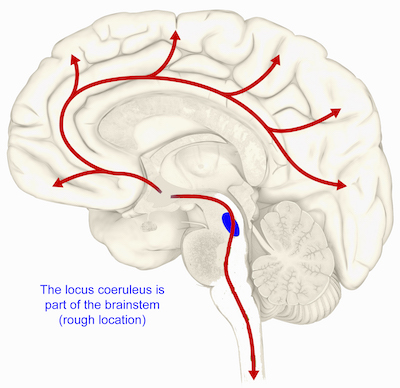A few celebrity neuropeptides have acquired a reputation – sometimes exaggerated — and a flavor, corresponding to their functions in the brain.
Oxytocin has the aura of a “cuddle hormone” because of its role in social bonding and reproduction. Endorphins are the body’s natural pain-killers, long thought to be responsible for “runner’s high.” Hypocretin/orexin, missing in narcolepsy, is a stabilizer of wakefulness as well as motivation.
Galanin, studied by Emory neuroscientist David Weinshenker’s lab, is not as flashy as other neuropeptides. While it is accumulating an intriguing track record, galanin appears to play subtly different roles depending on where it is expressed. It is tempting to call galanin the “keep calm and carry on” hormone, but the research on galanin is so complex it’s difficult to pin down.
Graduate student Rachel Tillage and colleagues have a paper this week in Journal of Neuroscience detailing how galanin’s production by one group of neurons in the brainstem confers stress resilience in mice.

The new paper shows that exercise increases galanin in the locus coeruleus, a region in the brainstem that produces norepinephrine (important for attention, alertness, anxiety and muscle tone). Galanin can provide protection against the anxiety-inducing effects of artificial but very specific locus coeruleus activation by optogenetics.
In the locus coeruleus and elsewhere, galanin is primarily inhibitory in its acute effects on neurons. For stress resilience, the Emory researchers favor the idea that elevated galanin leads to “long-term neurotrophic adaptation,” rather than acute effects. Galanin expression increases in the late stages of Alzheimer’s disease, but whether it plays a neuroprotective role in that situation is poorly understood.
In other areas of the brain, such as the hypothalamus, one set of neurons that produce galanin are involved in falling asleep and the actions of the ICU sedative dexmedetomidine. A neighboring galanin-producing area of the hypothalamus is activated during parenting behavior. In reward-associated areas of the brain, galanin counteracts responses to opioids, so it is being studied by addiction researchers. Adding to the complexity, galanin and opioid receptors even mingle with each other.

